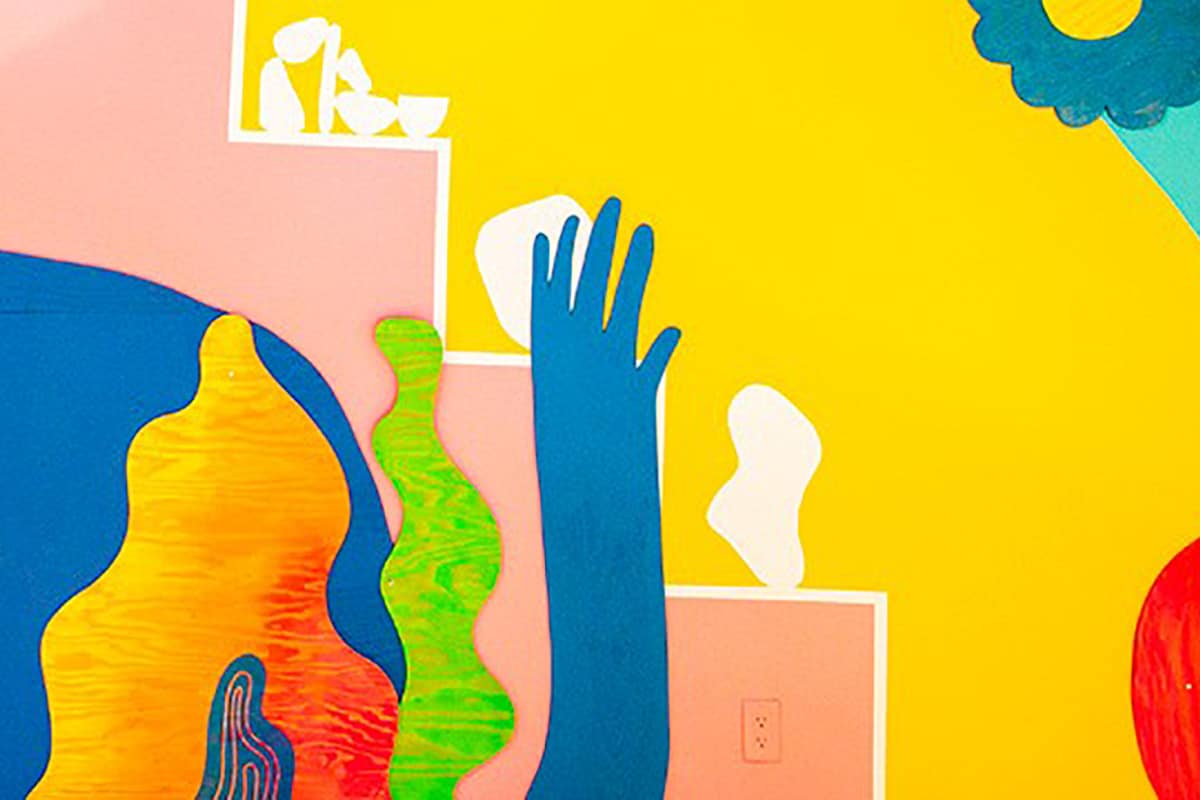
Meet the Artist: Mike Perry
If you’re heading up to The Rooftop at Pier 17 this summer, you’ll be transported into a kaleidoscopic underwater journey, thanks to the mural Wiggling Waves & Water Wanders that takes over two floors of the building’s interior.
The prolific artist behind the piece, Mike Perry, is known for his boldly colored paintings, animation, sculptures, books, drawings and many other creative works—including the graphics on TV’s Broad City, which garnered him an Emmy award. His mission, he says, is to conjure feelings of soul-soaring wonder. We spoke to Perry in his Brooklyn studio to learn how he does just that.
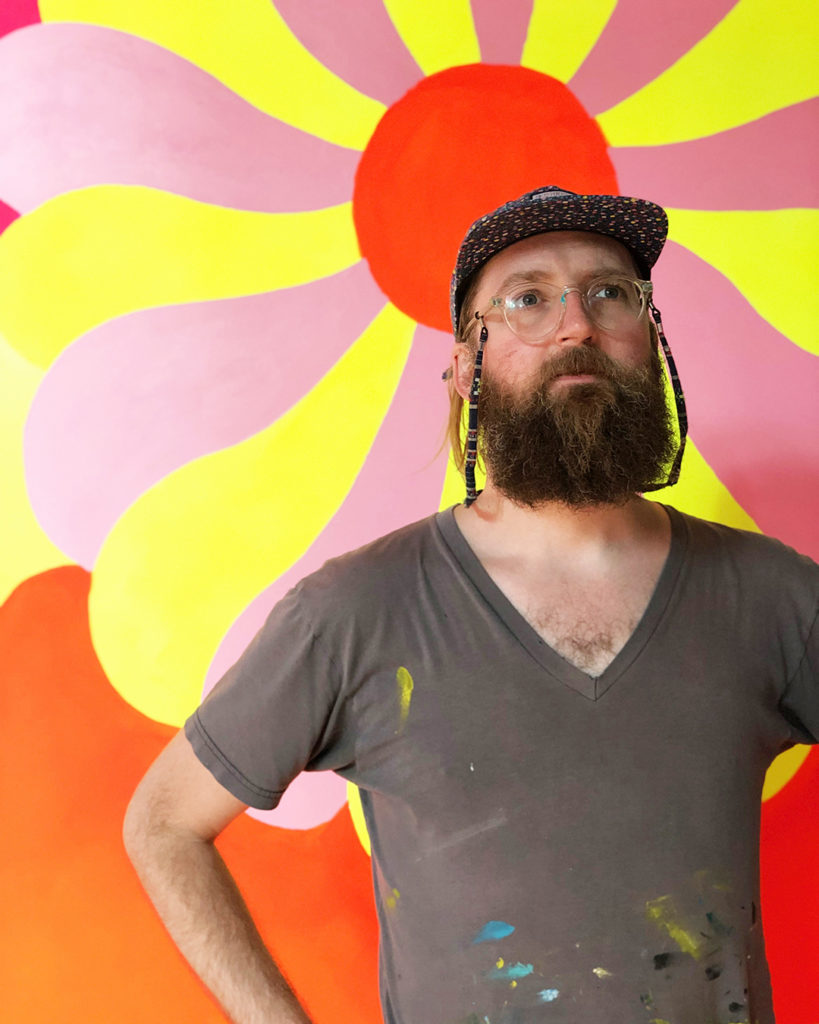
How did Wiggling Waves & Water Wanders come about?
I like to make things of different scales so when someone calls and says, “We want you to take over 3,000 square feet,” to me, it’s a no-brainer. I think this is my 10th or 11th mural and every time I do it, I want to get better. My first thought with this project was “3D mural.” I didn’t even know what that meant, but that was what popped into my head. At the studio, I work with a guy, J Bell. He handles the 3D aspect—he’s a phenomenal producer; he can install anything. And he allows the studio to think in different shapes and forms and dimensions so we can say, “Let’s do it! Let’s see if we can figure out how to make this.”
What does the piece represent for you?
My wife and I spent this whole weekend discussing how we wish we were on vacation right now. That’s what the mural is supposed to invoke. It’s summertime, you want to be outside, you want to be in the water, you want to be surrounded by fun and energetic things. This was almost like a message to myself: Go on vacation.
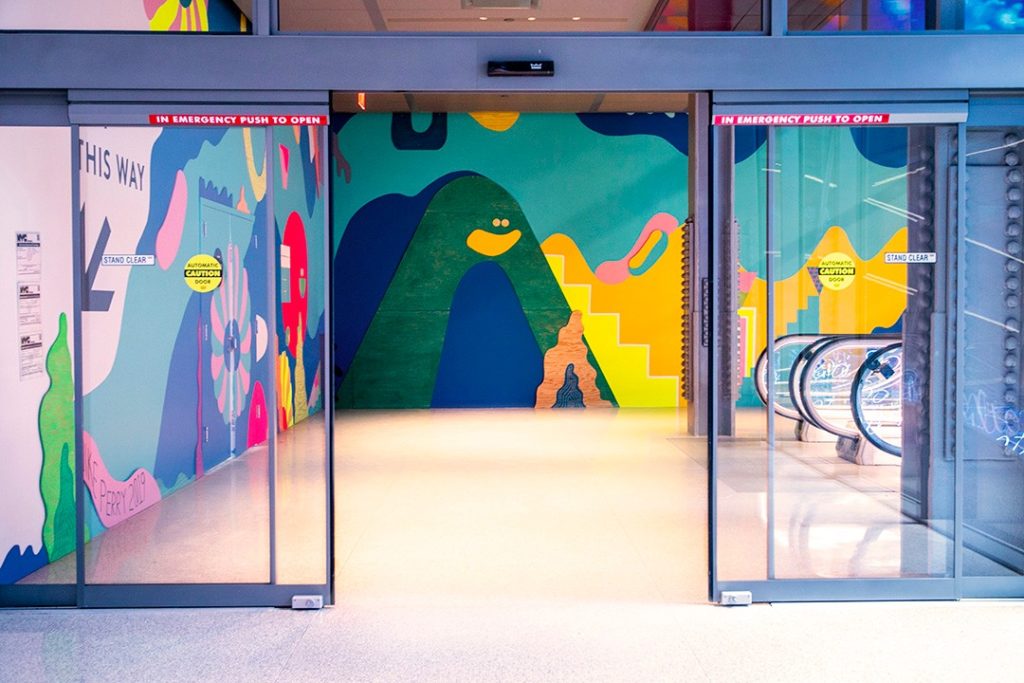
Where are you going for your summer vacation this year?
We’ve been going to Fire Island with friends every August. I don’t like to wear shoes, so I love Fire Island because I don’t have to wear shoes for the entire time I’m there.
Tell us about the title of the mural.
The word wiggling is one I find really important. I like the shape. I like the way that the word is written. If it just feels like a fun word to me. It wields weird, wonderful ways of walking and wandering!
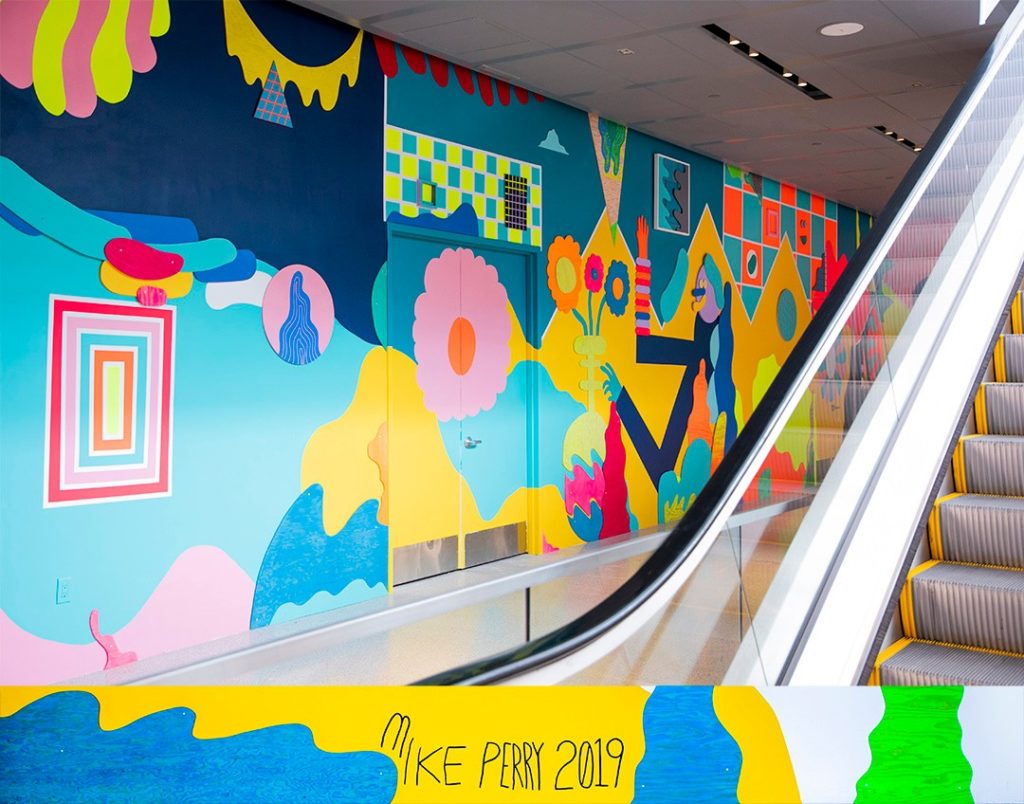
What’s the process for producing a mural like this?
I did concept drawings on paper, then scanned them, and from there, it’s about figuring out the scale. Luckily, my studio is about the same height as the space at Pier 17. J cut the shapes out of plywood himself, and that’s an important step to me. I’m drawing by hand. Jay’s cutting the shapes by hand, we’re painting them all by hand. It continues the legacy of this piece of wood: this is something made by hand that we’re presenting to you.
Does the piece evolve as you’re installing your work?
Oh, hell yeah. I love mistakes and I love accidents. The reality of the space is completely different than the piece of paper. There are all these things that you have to respond to—things that you need to be in the space to reflect upon.
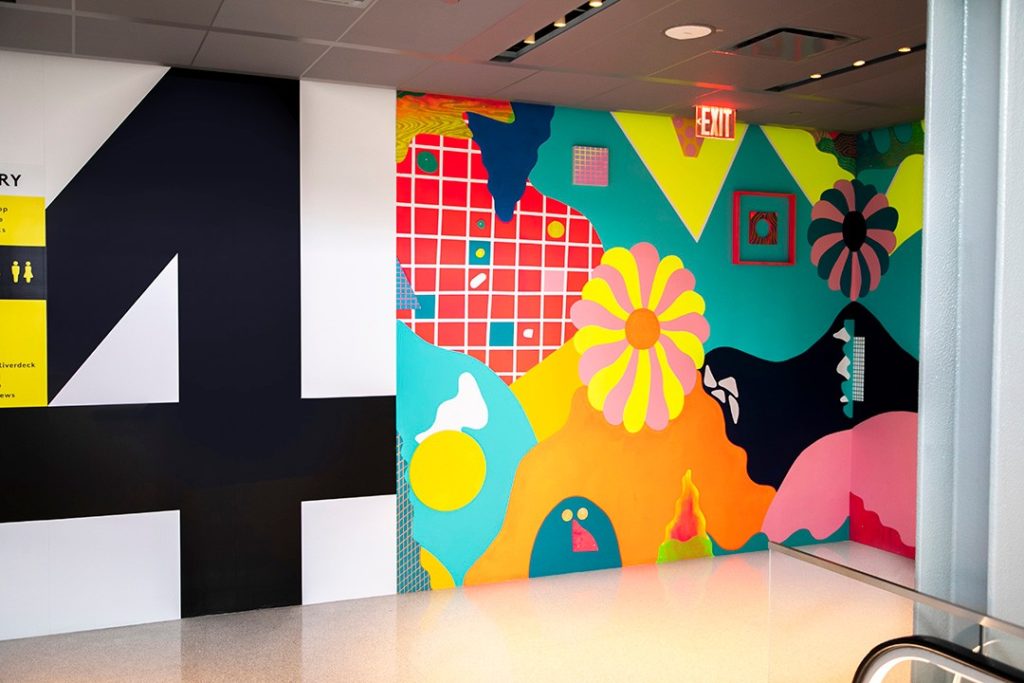
What do you hope people take away from this piece?
Hopefully, just joy. Thinking about this space, and all the people who are going to see it, was super fun in terms of composition. To make every inch interesting in some weird way and to create a never-ending number of backdrops for the audience. My first thought when I got it done was like, Man, I can’t wait for some kids to see this. For some little kid to be like, What?! To make their eyes bulge out. That’s my dream. It’s my job to inspire other people. To keep this beautiful legacy of creativity ever-flowing forever.
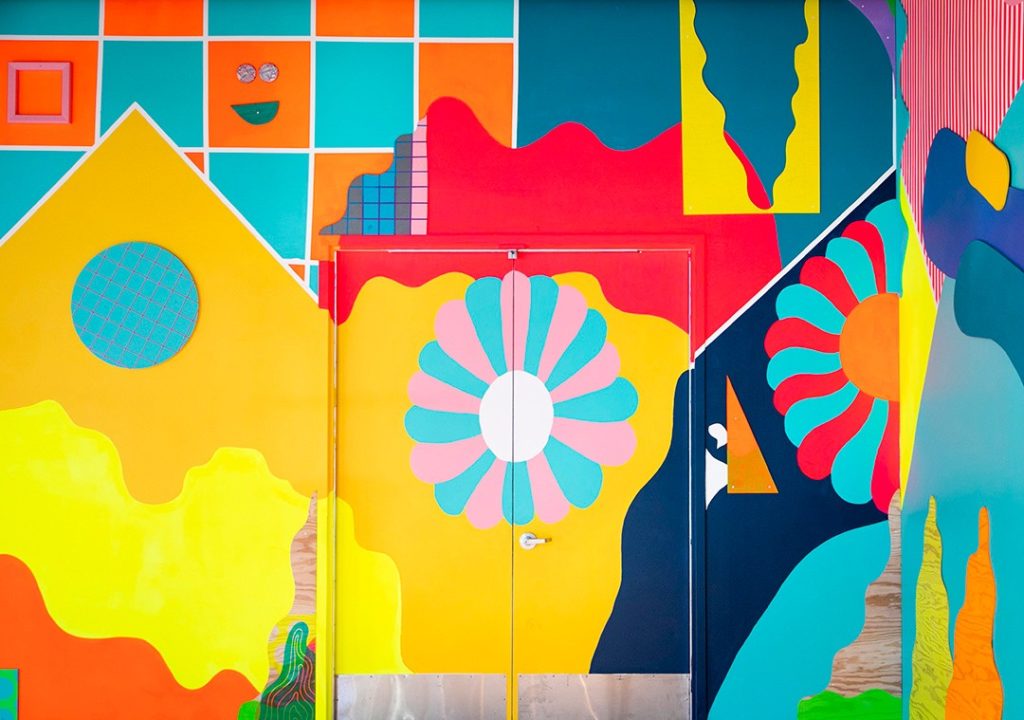
What else is coming up from Mike Perry Studio?
I have a new kid’s book coming out in September called, What If My Dog Had Thumbs? It’s my first book that I’ve written and illustrated. And I’ve illustrated a couple of books in a series called Astro Babies, written by Michelle Tea.
What superpower do you wish you had?
I’ve thought about this a lot. I used to play Dungeons & Dragons as an adolescent and there was this power you could have where you could touch something and you would know the entire history of the object. You’d be able to see it: Who made it, how it was made. I always loved that idea of being able to intuitively know the history of something by touching it.
